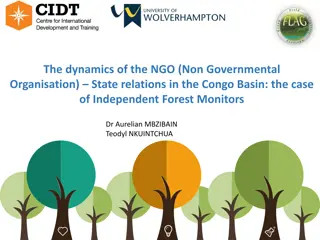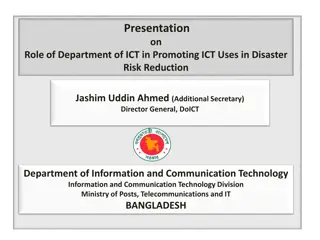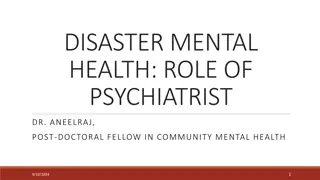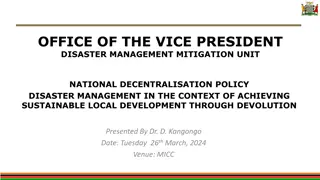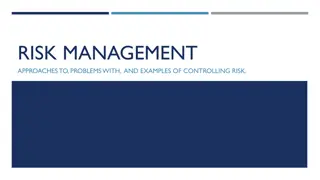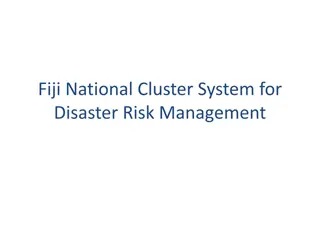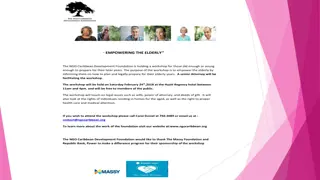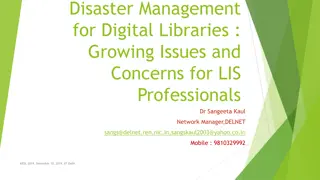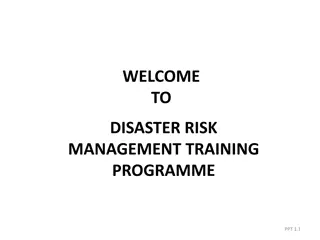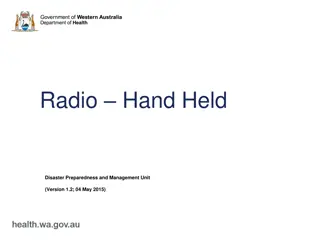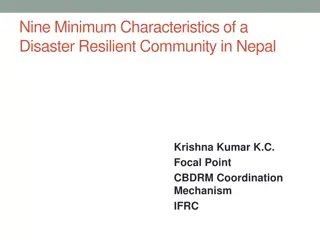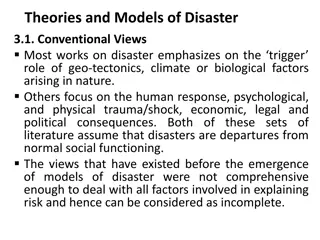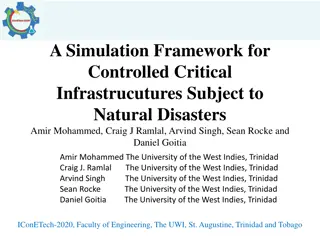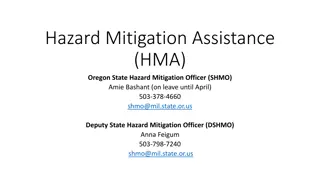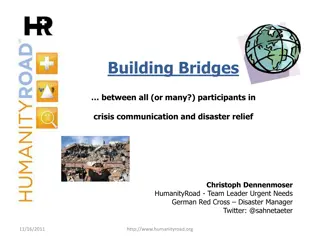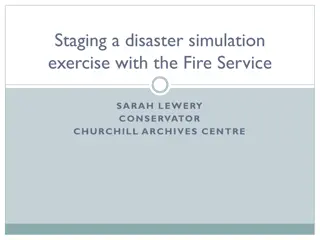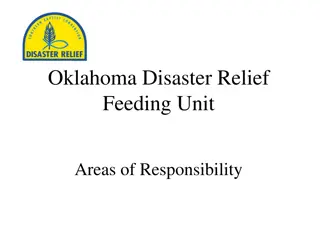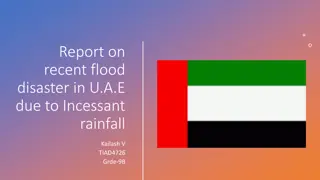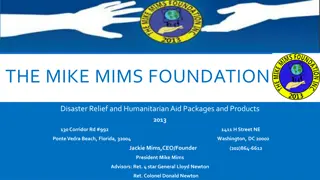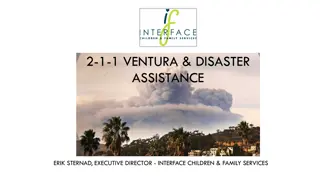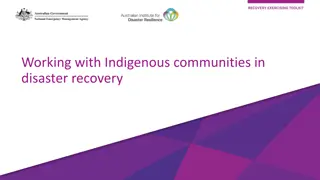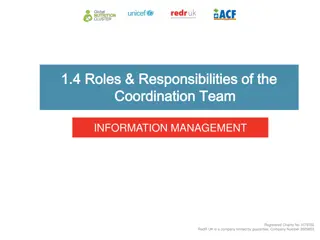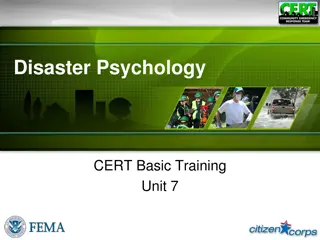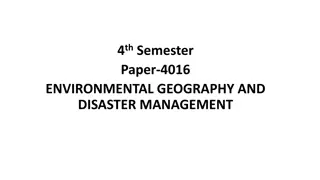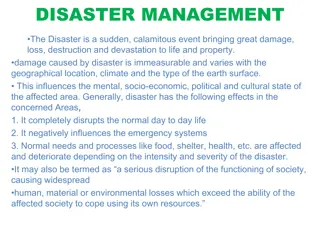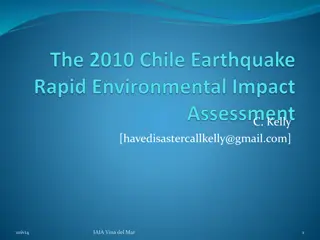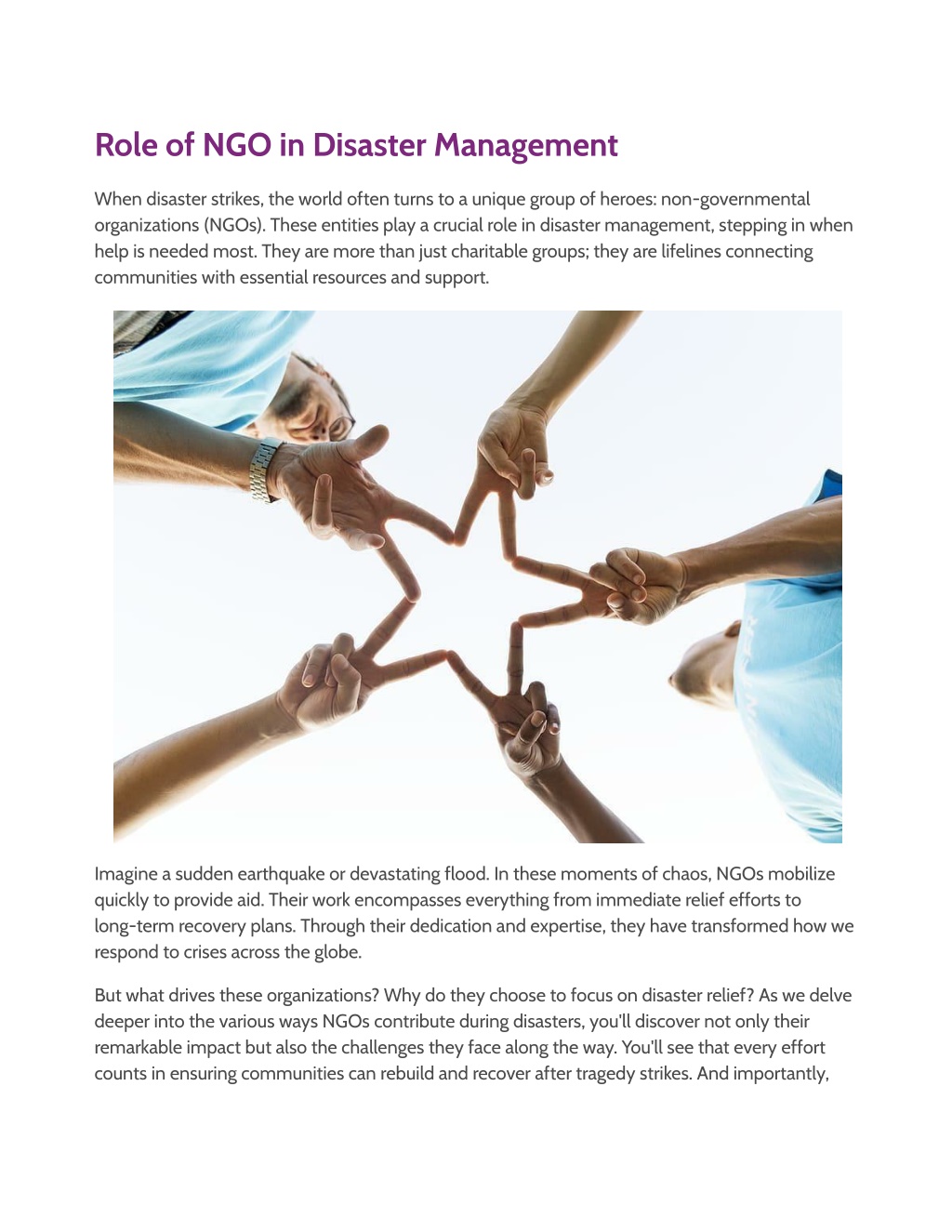
Role of NGO in Disaster Management
NGOs often have local knowledge and networks that enable them to respond effectively. This grassroots approach allows for tailored solutions that meet the specific needs of affected communities. The success stories from their interventions illustrate
Download Presentation

Please find below an Image/Link to download the presentation.
The content on the website is provided AS IS for your information and personal use only. It may not be sold, licensed, or shared on other websites without obtaining consent from the author. Download presentation by click this link. If you encounter any issues during the download, it is possible that the publisher has removed the file from their server.
E N D
Presentation Transcript
Role of NGO in Disaster Management When disaster strikes, the world often turns to a unique group of heroes: non-governmental organizations (NGOs). These entities play a crucial role in disaster management, stepping in when help is needed most. They are more than just charitable groups; they are lifelines connecting communities with essential resources and support. Imagine a sudden earthquake or devastating flood. In these moments of chaos, NGOs mobilize quickly to provide aid. Their work encompasses everything from immediate relief efforts to long-term recovery plans. Through their dedication and expertise, they have transformed how we respond to crises across the globe. But what drives these organizations? Why do they choose to focus on disaster relief? As we delve deeper into the various ways NGOs contribute during disasters, you'll discover not only their remarkable impact but also the challenges they face along the way. You'll see that every effort counts in ensuring communities can rebuild and recover after tragedy strikes. And importantly,
theres always room for individuals like you to step up and support NGO fundraising initiatives that make this vital work possible. Ways in which NGOs provide aid during disasters Non-governmental organizations play a critical role in disaster relief efforts. They mobilize quickly, often before government aid can reach affected areas. Their agility allows them to provide immediate assistance where it is most needed. NGOs supply essential resources such as food, clean water, and medical supplies. They set up temporary shelters for those displaced by disasters and coordinate evacuation plans to ensure safety. Additionally, these organizations offer emotional support through counseling services. Volunteers are trained to help individuals cope with trauma during tough times. In many cases, NGOs also facilitate long-term recovery initiatives. They assist communities in rebuilding infrastructure and restoring livelihoods after devastating events. Furthermore, they advocate for policy changes that address the root causes of vulnerability in disaster-prone areas. This proactive approach helps strengthen communities against future disasters while promoting resilience. Case studies of successful NGO involvement in disaster management The response of NGOs during the 2010 Haiti earthquake showcased their critical role in disaster management. Organizations like Partners In Health delivered immediate medical care and established long-term healthcare systems, demonstrating a blend of urgency and sustainability. Another compelling example is the work of ShelterBox after Typhoon Haiyan in the Philippines. They provided essential shelter materials to thousands affected by the storm, ensuring families had safe places to recover. Their rapid response helped communities rebuild faster. In India, during the floods of Kerala in 2018, local NGOs spearheaded relief efforts on multiple fronts. By coordinating with volunteers and leveraging social media for fundraising, they distributed food, medicine, and clothing effectively. These case studies illustrate how NGOs can mobilize resources quickly and efficiently while fostering community resilience through localized support networks. Challenges faced by NGOs in disaster management
NGOs often face significant challenges during disaster management. Limited funding can hinder their response capabilities. Many organizations rely heavily on donations, making it difficult to secure resources when crises strike. Coordination with various stakeholders is another hurdle. NGOs must collaborate with local governments, other agencies, and communities. Different priorities can create confusion and slow down relief efforts. In addition to logistical issues, NGOs also grapple with access to affected areas. Natural disasters may damage infrastructure, making transportation of aid challenging. Moreover, the emotional toll on staff cannot be overlooked. Working in high-stress environments takes a mental health toll that isn t always addressed adequately. Changing regulations or political climates may impact operations significantly. Navigating these complexities requires resilience and adaptability from NGOs committed to disaster relief efforts. How individuals can support NGOs in disaster relief efforts Supporting NGOs in disaster relief is a powerful way to make a difference. Individuals can start by donating money or supplies directly to organizations involved in crisis response. Volunteering time is equally valuable. Many NGOs welcome hands-on help during emergencies, whether it s packing food, distributing aid, or providing medical assistance. Advocacy plays a crucial role too. Spreading awareness about an NGO's mission can attract more supporters and resources vital for effective relief efforts. Attending fundraising events also boosts their capabilities. Engaging with local community initiatives helps build stronger networks that benefit everyone involved. Consider using social media platforms to amplify the message of NGOs working tirelessly on the ground. A simple share can reach countless people who might want to contribute as well. Every action counts and collectively impacts those affected by disasters significantly. Importance of collaboration between government and NGOs in disaster management Collaboration between government entities and non-governmental organizations (NGOs) is crucial for effective disaster management. Each party brings unique strengths to the table, enhancing response efforts. Governments often provide the framework and resources needed for large-scale operations. They have access to funding, infrastructure, and regulatory mechanisms that can help streamline
relief efforts. On the other hand, NGOs possess local knowledge and agility. Their established relationships within communities allow them to mobilize quickly and effectively during emergencies. When these two forces unite, they create a powerful synergy. Information flows more freely, leading to better resource allocation and faster action on the ground. Furthermore, joint initiatives foster trust among affected communities as they see both sectors working together towards recovery. Effective communication is essential in this partnership. Regular updates ensure everyone understands roles and responsibilities while minimizing duplication of efforts in chaotic situations where every second counts. Conclusion NGOs often have local knowledge and networks that enable them to respond effectively. This grassroots approach allows for tailored solutions that meet the specific needs of affected communities. The success stories from their interventions illustrate just how impactful they can be when disaster strikes. As we reflect on the critical roles played by NGOs during disasters, it s clear that their contributions are vital not only for immediate relief but also for long-term recovery efforts. Engaging with these organizations through effective NGO fundraising drives enables sustained support where it's needed most ensuring resilience against future disasters. Visit-https://www.equitylogistic.com/blogs/details/what-is-warehousing-in-suppl y-chain-management






